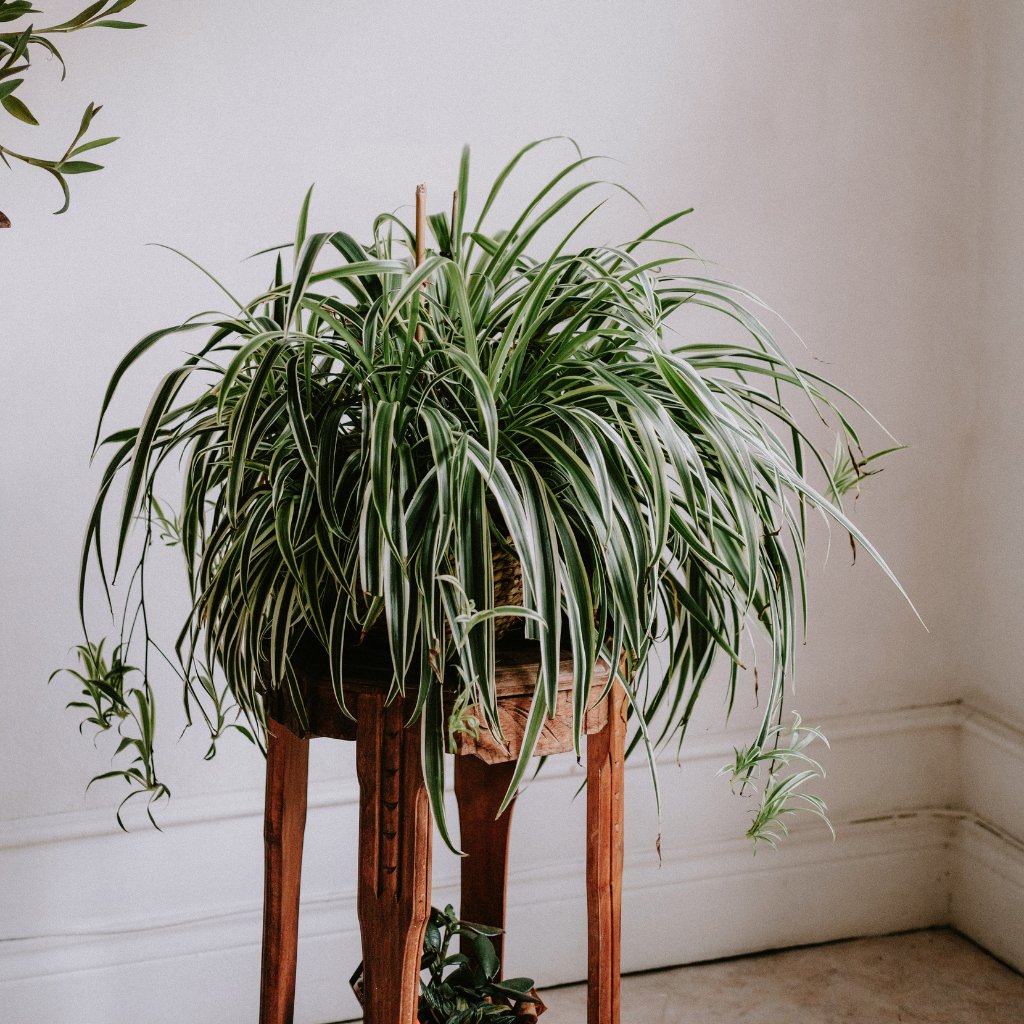Light Requirements:
Spider plants prefer bright, indirect light. However, they are adaptable and can also thrive in low light conditions. If you notice the leaves turning yellow, it might be receiving too much direct sunlight, so consider moving it to a shadier spot.
Watering:
Water your spider plant when the top inch or so of the soil feels dry to the touch. They prefer moist soil but be cautious not to overwater. Overwatering can lead to root rot, so ensure the pot has proper drainage.
Repotting:
Spider plants can grow quite vigorously, so you might need to repot them every couple of years or when they become root-bound. Choose a pot that's slightly larger than the current one and ensure it has good drainage.
Grooming or Pruning Needs:
Pruning is generally not necessary for spider plants. However, you can remove dead or yellowing leaves to keep the plant looking its best. Additionally, spider plants produce long, spider-like stems, which can be trimmed if desired.
Compatibility with Pets:
Spider plants are non-toxic to both cats and dogs, making them a pet-friendly choice for households with furry friends.
Additional Tips:
- Spider plants are known for their air-purifying qualities. They can help remove toxins from the air, improving indoor air quality.
- They are easy to propagate. You can quickly grow new plants from the plant-lets that develop on the long stems.
- Spider plants are not heavy feeders. Fertilize them once a month or so during the growing season for optimal growth.
- Occasionally, spider plants can be affected by pests like mealybugs, spider mites, or scale. Keep an eye out for these pests and treat with insecticidal soap or neem oil if needed.
- Spider plants are native to tropical and southern Africa and are recognized for their long, slender leaves that resemble spider legs.
With minimal care, spider plants can thrive and beautify your indoor space for many years. Their adaptability and resilience make them a favorite among both novice and experienced plant enthusiasts.


